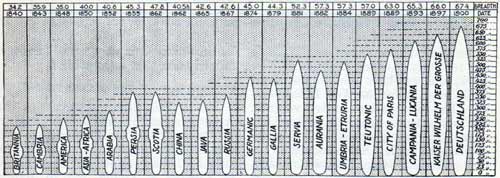The Advent of the Screw Propeller
But by this time the success of the Atlantic steamship was , and in December, 1839, the President, a craft of 2,3G6 tons and 540 horse power, was launched. Curling & Young built her on the Thames, but in March 1841, on the return trip from New York, she was lost with all aboard. In 1840, the Great Western Company undertook a step of vast importance. The chief marine architect and engineer of that time was Isambard K. Brunel.
When the Great Western Company applied to him for a vessel that would eclipse any craft afloat, he advised the building of an iron ship of three thousand tons. His plans were carried out in the Great Britain, a craft of fine model, for whose construction a special graving dock was built. Brunel's first designs were for a side-wheeler, but were changed while the hull was building.
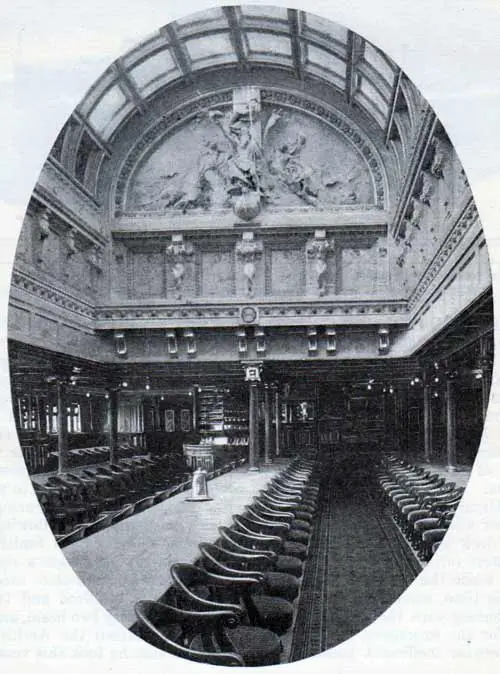
On board a modern Atlantic liner - the dining saloon of the American Line SS St. Louis.
At this time, marine engineers were experimenting with the screw as a substitute for the expensive, cumbersome, and otherwise inefficient paddlewheels of that day. As early as 1770, it had been suggested by Watt, and nine years later one Matthew Wasborough, of Bristol, is said to have taken out a patent on such a device. Its efficiency was first really proved by Stevens, in 1804, and but for the failure of his engines his work would have helped the world in a great stride towards progress. It was left to Ericsson, however, to perfect the new propeller in 1836, during his residence in England.
Following his suggestions, Thomas Petit Smith, an English engineer, built a screw steamship in 1839 that was a complete success. The vessel was a hundred and twenty five feet long, twenty-two beam, and thirteen deep, and named .the Archimedes. It chanced that he took this vessel to Bristol in 1842, when Brunel, at once recognizing its advantages, changed the Great Britain's plans, and introduced the screw in place of the paddlewheels.
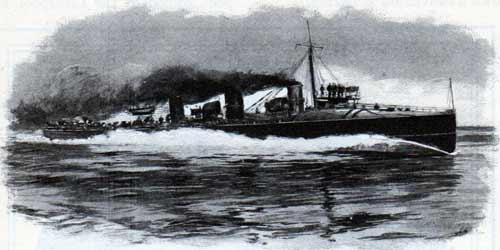
The British torpedo boat destroyer Viper, a turbine boat which recently broke all records for speed at sea, attaining a pace of more than forty miles an hour.
The engines were of 1,500 I. H. P. (indicated horsepower) and of such unusual size that the company itself was compelled to build them. It is said, furthermore, that Nasmyth invented the steam hammer in order to forge her main shaft. The engines had four cylinders of eighty-eight inches diameter; she was three hundred and twenty two feet long, and fifty-one feet wide.
A curious feature of her machinery was that four endless chains drove the screw shaft over a large drum. Compared with the prevailing type, the Great Britain was a great success, but she ran on the Atlantic route only three seasons. Then, after going ashore in Dundrum Bay, Ireland, she was hauled off, refitted with direct acting engines of five hundred horsepower, and entered in the Melbourne trade. She is now said to be a coal hulk in the Falkland Islands.
A chart that shows the development of the Atlantic liner from the two hundred and twenty five foot side-wheeler of 1840 to the seven hundred foot greyhound of today. (Linked to larger image)
Notwithstanding the success of the Great Britain, the prejudice against iron hulls and the screw was difficult to overcome. Navigators declared it unsafe to venture in hulks whose metal destroyed the usefulness of the compass, and the iron's disposition to foul rapidly was another serious defect. But subsequently both these evils were overcome by the introduction of the floating compass and of the anti fouling compositions for painting ship's bottoms. Later, when marine engineers obtained fixed scientific knowledge concerning the screw propeller, its slight defects were remedied; and with the construction of direct acting engines, its success was assured.
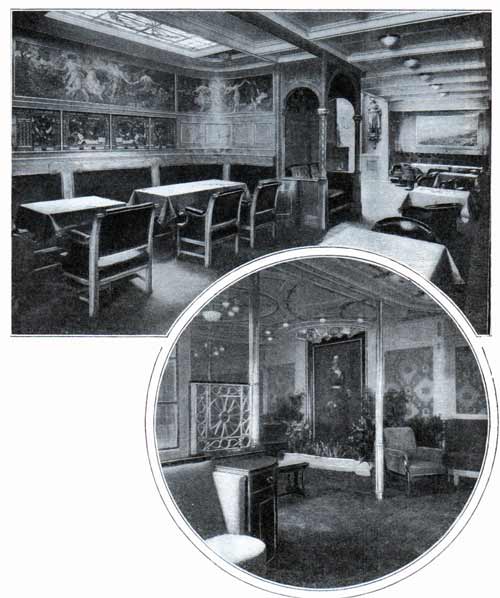
On board the modern Atlantic liner-the upper engraving shows a corner of the smoking room, the Lower, her Grand Saloon.
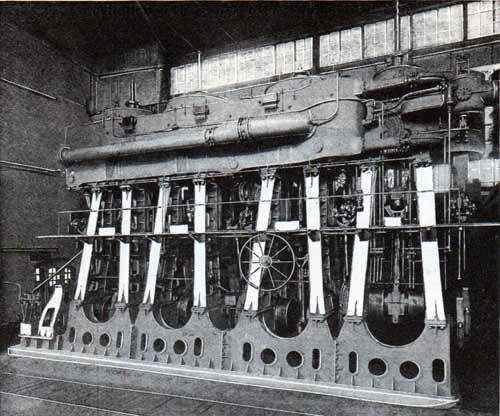
The engines of a modern Atlantic liner -- this shows the huge machine that propels the Kaiser Wilhelm der Grosse. The engines are triple expansion, four cylinders, developing twenty seven thousand horsepower.
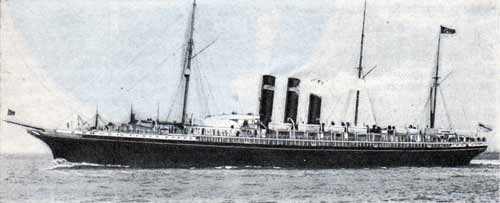
The American Liner Paris, 10,795 tons, 20,000 horsepower, 580 feet long, built at Glasgow, 1889. Photograph by Johnston, New York.
The Story of the Steamship - Contents
Ocean Travel Steamship Voyages
GG Archives
Transatlantic Ships and Voyages
- 1870 The Ocean Steamer
- 1877Steamship Lines - Transatlantic Passenger Traffic
- 1885 The Influence of Sea Voyages Upon Women
- 1897 Twelve Days on A German Steamship
- 1899 On The Ocean: From the "Yiddish" Poem of M. Rosenfeld
- 1899 The Therapeutic Value of Ocean Voyages
1886 Development of the Steamship
Ocean Passenger Travel (1891)
Ocean Steamships (1882)
1901 Story of the Steamship (1901)
- Gambling on Ocean Liners (1890)
- Crossing the Atlantic Like A Seasoned Ocean Voyager (1904)
- The Ethics of Ocean Travel (1904)
- Who's Who On Board - The Secrets in the Passenger List (1910)
- Early Days of Trans-Atlantic Navigation (1912)
- Wreck of the RMS Titanic - First Account (1912)
- How to Get To Australia (1918)
- Passengers Travelling Abroad Fewer in Number This Season than In 1920 (1921)
- Giant Ex-German Liners Weapons in Duel of I.M.M. and Cunard for Blue Ribbon of Atlantic (1921)
- Reclassification of Older Passenger Ships in Transatlantic Trade Coming (1922)
The Dry Years - The Eighteenth Admendment
Ocean Travel Topics A-Z
- Boutique Shops & Ship's Stores
- Ocean Travel Books
- Brochures - Steamships & Ocean Liners
- Correspondence, Shipboard
- Fleet Lists of Passenger Ships
- Ships and Ocean Liners Archival Collections
- Interesting Fun Facts and Factoids
- Journeys in Steerage
- Ocean Journeys
- Other Ephemera
- Passage Contracts and Tickets
- Postcards of Steamships & Ocean Liners
- Programs and Concerts
- Provisioning Ocean Liners
- Sanitation at Sea
- Ship Passenger Lists
- Ship Publications
- Shipboard Affairs
- Steamship Captains
- Steamship Crew
- Steamship Lines
- Ship Tonnage and Measurements
- Steamship Port of Calls
- Stowaways Onboard
- RMS Titanic
- Transatlantic Voyages
- Travel Guide (1910)
- Vintage Advertisements
- Vintage Ocean Liner Menus

